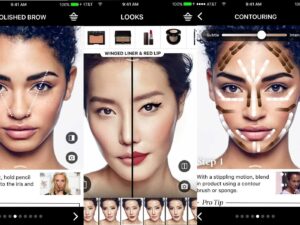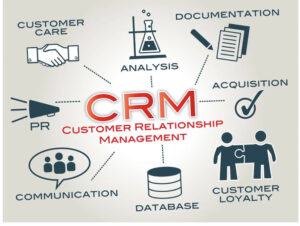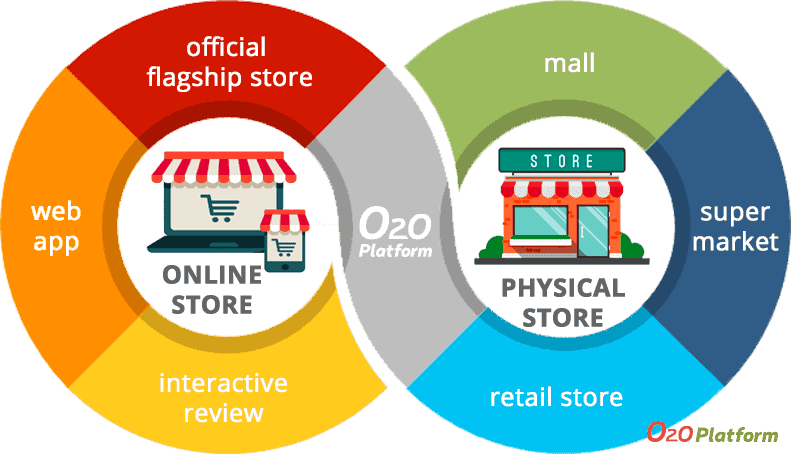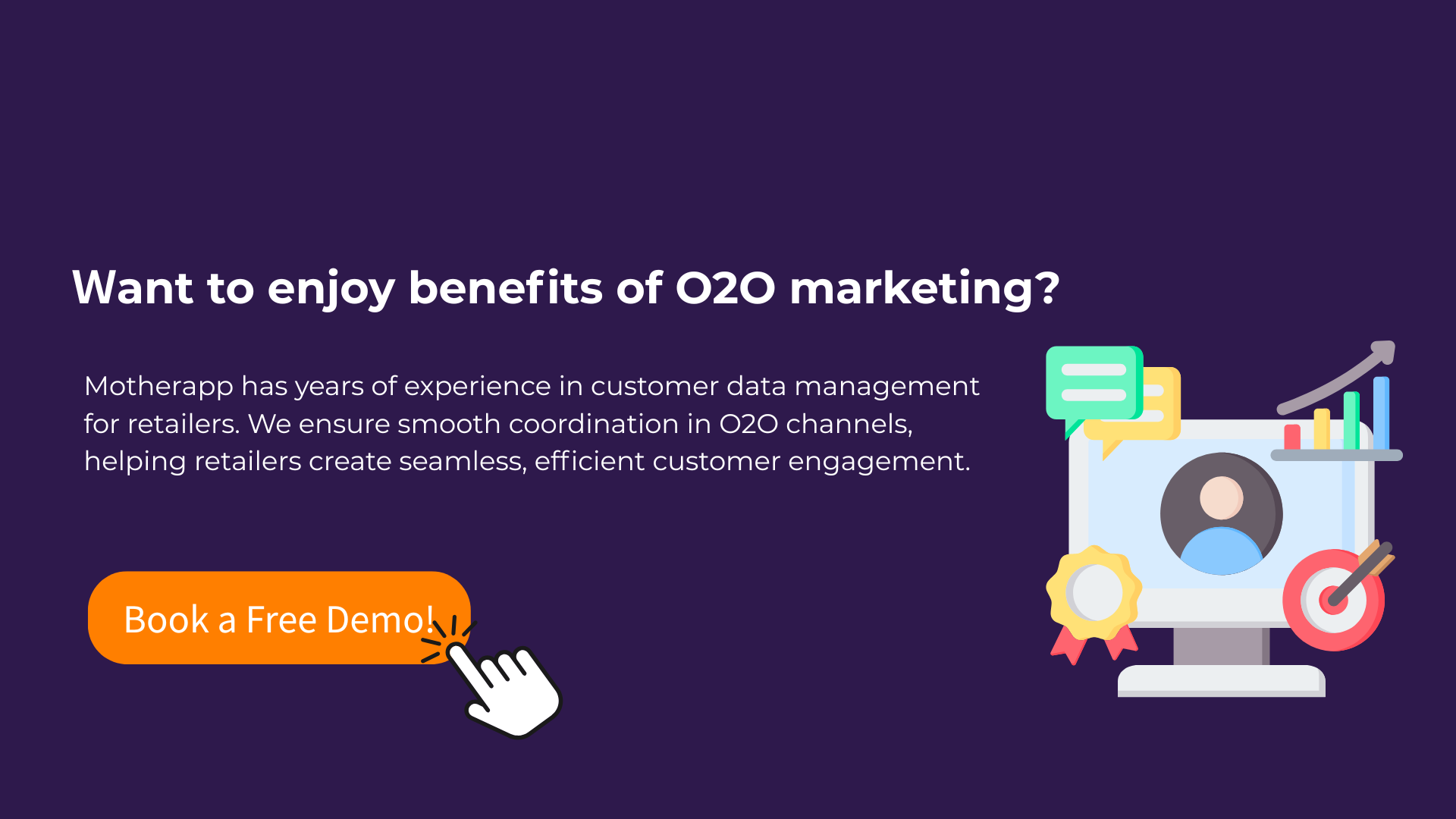This article provides a clear and practical introduction to O2O (Online-to-Offline) marketing, explaining how businesses can integrate digital platforms with physical retail to increase customer engagement and drive sales. Through real-world examples like Sephora and IKEA, the article highlights how tools such as CRM systems and loyalty programs help brands create seamless online and offline experiences.
Key points you’ll learn:
- Why O2O strategies are essential for modern retailers?
- How online engagement can drive offline traffic and conversions?
- Success Case: Personalized marketing and cross-channel data integration
Who should read this:
- Retail marketers and e-commerce professionals
- Business owners exploring O2O or omnichannel strategies
- CRM or loyalty program managers
This guide is written for professionals looking to better understand and apply O2O marketing strategies in today’s competitive retail landscape.
Introduction
Businesses have experienced a significant transformation in recent years with the rise of e-commerce. The integration of Online-to-Offline (O2O) marketing has proven to be a game-changer. By seamlessly connecting digital platforms with physical stores, O2O strategies improve customer experience, increase brand engagement, and drive sales performance.
O2O marketing extends the customer journey across channels, allowing for more upselling and cross-selling opportunities. Brands like Sephora, IKEA, and Club Kapok demonstrate how effective O2O implementation enhances loyalty and operational efficiency. Let’s take a closer look.
【Success Story】How a Fashion Brand Used O2O Marketing to Boost Customer Engagement
What Is The O2O Marketing Strategy?
1.Seamless Offline-to-Online Integration
Sephora integrates O2O through its loyalty app and Sephora Virtual Artist, an AR tool that lets users try on makeup virtually. These tools encourage online exploration while driving in-store visits.
- Customers receive personalized campaigns, rewards, and vouchers
- The AR try-on tool bridges online discovery with offline decision-making

IKEA offers a unified journey through:
- A digital catalog and planning tools via its website and app
- IKEA PLACE, an AR application that previews furniture in users’ homes before purchase
Both brands demonstrate how tech-enabled engagement can lead to smarter shopping decisions and fewer returns.

This advanced AR technology not only addressed in-storehygiene concerns, but also provided customers with an engaging and interactive experience, effectively bridging the gap between the online and offline shopping realms. Significantly, allowing businesses to extend the O2O journey beyond the physical store, engaging customers online after their visit. Companies can enhance the overall customer experience and empower individuals to make more informed decisions when selecting products. The O2O strategic approach has contributed to heightened customer satisfaction and a notable reduction in product returns, showcasing the efficacy of tech-infused retail strategy.
2. Personalized Recommendations Through Unified Data
IKEA Family shows how loyalty programs integrate cross-channel data to:
- Recommend personalized offers and event invitations
- Analyze shopping behavior to tailor communication
Sephora enhances personalization through:
- Google Analytics 360 collects data from both online and offline behavior
- CRM integration for analyzing customer preferences and optimizing campaigns
This approach improves retention and encourages repeat purchases.

3. Using Online Channels to Drive In-Store Traffic
Retailers use O2O marketing to:
- Promote in-store events via email, apps, and web content
- Offer limited-time deals or QR codes redeemable at physical stores
IKEA uses inspirational online content to motivate customers to plan in-store visits. Sephora promotes exclusive beauty consultations and in-store events through its app.
These tactics increase brand engagement and guide customers to real-world experiences.

Success Case: Kapok’s Seamless O2O Marketing Powered by Motherapp
kapok is a premium lifestyle brand based in Hong Kong, known for offering a curated selection of fashion, beauty, and lifestyle products through both physical stores and an e-commerce platform.
However, the brand faced challenges in integrating its online and offline membership systems. This gap made it difficult to run unified marketing campaigns and limited their ability to engage customers consistently across channels.
How MotherApp Enabled O2O Marketing Success
- Unified Membership: A single loyalty app syncs data across physical and digital touchpoints
- QR Code Points System: Points collected instantly in-store, synced with e-commerce purchases
- Tiered Rewards: Four membership levels (Canva, Pod, Thread, Bloom) deliver tailored benefits
- Personalized Campaigns: POS-integrated marketing templates support digital stamp cards, birthday perks, and exclusive coupons
[Read Success Case] Beyond App Design: How Motherapp Enabled Kapok’s O2O Marketing and Customer Engagement
Conclusions
Retail brands use O2O (online-to-offline) marketing strategies to increase opportunities for upselling and cross-selling. When customers interact with a brand across both online and offline channels, their chances of making a purchase go up. By connecting digital and physical touchpoints, O2O strategies help businesses extend customer engagement and ultimately boost revenue and profitability.
FAQs
Q1: What is O2O marketing?
O2O (Online-to-Offline) marketing is a strategy that connects digital interactions—such as browsing a website, using a mobile app, or joining an online campaign—with offline actions like visiting a physical retail store, redeeming offers, or completing in-store purchases.
Q2: Why is O2O important for retail?
O2O (Online-to-Offline) marketing is essential for retailers operating across both digital and physical retail stores.
One key advantage is the ability to unify loyalty programs across platforms. O2O marketing strategies allow retailers to track and reward customer behavior both online and offline, making it easier to build a consistent, personalized experience that increases customer retention and engagement.
Q3: What are successful O2O marketing examples?
Companies like Sephora and IKEA use tools such as loyalty apps and AR experiences to bridge online and offline journeys.
Kapok, a Hong Kong-based lifestyle brand, implemented a unified membership system and QR code-based rewards to successfully boost cross-channel engagement and customer retention.
Q4: Can small and medium retail implement O2O marketing strategies?
Yes. O2O (Online-to-Offline) marketing is suitable and valuable for every size of retail.
O2O connects online customer interactions—such as website visits, mobile app usage, or social media engagement—with offline actions like in-store visits, purchases, or loyalty program participation.
Why it matters:
- Physical stores have higher conversion rates. On average, offline stores convert 20–40% of visitors into buyers. (source: Retail TouchPoints)
- In comparison, e-commerce websites convert only about 2%. (source: Statista)
This means that O2O marketing helps small retailers turn online traffic into high-converting offline sales. It improves customer engagement and boosts revenue by aligning digital and physical experiences.
Q5: What tools are commonly used in O2O marketing?
Popular O2O tools include:
- Loyalty and membership apps
- CRM(Customer Relationship Management)and analytics platforms
Motherapp combines both functions into one unified solution, enabling businesses to run data-driven O2O marketing with ease and efficiency
Q6: What are the key benefits of O2O marketing?
O2O strategies help businesses:
- Increase store visits through digital engagement
- Improve personalization with integrated customer data
- Reduce product returns by enhancing decision confidence
- Enable scalable upselling and cross-selling with real-time insights
- Strengthen brand loyalty through consistent multi-channel interactions
Motherapp is an experienced O2O marketing solution provider. Beyond just developing membership apps, we help retail clients design data-driven campaigns that enhance customer engagement across both online and offline channels.

